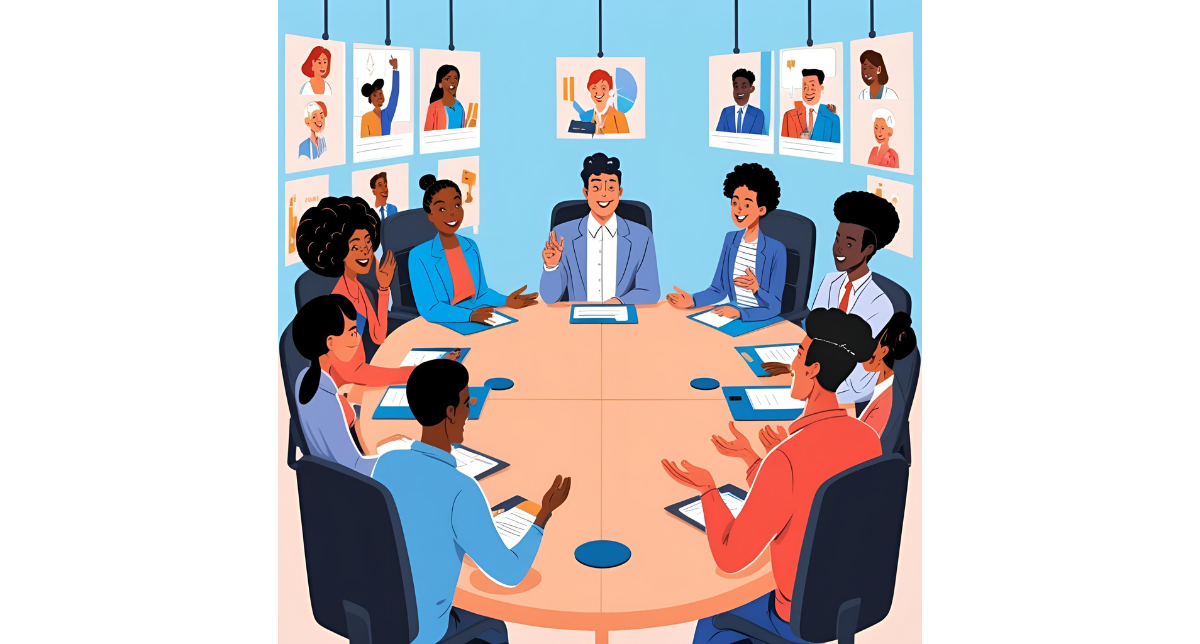As an engineering leader, hiring is your most pivotal role - it's how you expand your organization’s capacity and shape its culture. As the market is showing signs of improvement, companies are eagerly reopening their hiring pipelines. Yet, the challenge isn't just finding talent; it's about finding people who will positively impact your culture and team dynamics and be excited to join your organization.
Understanding the Hiring Challenge
The process of technical hiring goes beyond the mere evaluation of skills; it's an intricate balance of finding individuals who not only excel in their respective fields but also resonate with your company's culture and bring fresh perspectives to the table. The objective is not just to identify and engage these talents but also to meticulously evaluate their compatibility with your organization's ethos and proficiency requirements. Moreover, fostering a positive and enriching experience for them is crucial, as it sets a precedent that inspires others to embark on a similar journey with your company.
Building a robust engineering hiring pipeline presents several key challenges. The first is identifying where to find the right candidates — those whose skills and values align with your company. Once located, the next hurdle is to spark their interest in joining your organization. Following this, a thorough assessment of their skills is crucial to ensure they are appropriately leveled and assigned to the right team where they can thrive.
Getting started
If you're at the outset of building your pipeline, or if it has been a while since your last hiring phase, you might have many developers who are either new to interviewing or unfamiliar with your company's specific process. In this scenario, training your interviewers becomes a pivotal aspect of a successful recruitment strategy. This training should encompass both soft skills and the establishment of a structured question bank for your interviewers to utilize. It's important to note that research indicates that using standardized questions is the most effective method for accurately assessing a candidate's skills.
Finding the right candidates
When searching for the ideal technical candidate, it's crucial to first define the specific abilities and competencies needed for the role. Focus on assessing candidates' abilities and strengths, rather than their personal background, to mitigate the risk of familiarity bias. Look for individuals with a track record of impressive outcomes or relevant achievements that align with your requirements and can predict their success in the role. This approach allows you to narrow down your candidate pool effectively without relying solely on years of experience - for instance - as a metric, while opening the door for diversified candidates.
There are various strategies to connect with potential engineering candidates, such as sourcing through placement firms, hosting hackathons, and attending conferences. Focusing on DEI-centric conferences and events can be particularly effective. These venues are excellent for targeting individuals with specific interests or skills and for ensuring a diverse and inclusive candidate pool. Adjust your strategies, by refining placement guidance or selecting particular types of conferences to attract the right candidates. It is worth mentioning that the most effective method is often through referrals. Encourage your employees to refer their contacts, ensuring to balance this with efforts to diversify your candidate pool. Your employees are your best ambassadors, often knowing who will fit well and helping to promote your company to prospective hires.
Attracting the right candidates
At this point, hopefully your company has already established its brand, and the company is known for its technical prowess, innovative ideas, or strong team dynamics. Yet, it's always possible to further enhance your brand - consider creating technical blogs, hosting hackathons, and boosting your social media presence. Additionally, actively monitor platforms like Glassdoor and Blind to maintain a positive company image and address any areas needing improvement.
The structure of your hiring process also plays a crucial role in attracting the right candidates. Interviewers should be friendly, professional, and well-trained, as their demeanor significantly impacts candidate perception. However, the design of the process itself is equally important. For instance, a lengthy hiring process might discourage some applicants. The choice of assessment methods, such as take-home tests, may attract introverted candidates but could deter busy professionals or those with less free time, like parents. These preferences can vary by industry; product and data professionals might expect a take-home assignment, whereas software engineers may be less inclined.
A key recommendation is to encourage open dialogue with candidates and maintain transparency throughout the interview process, particularly regarding the nature and challenges of the work. Highlighting these challenges attracts problem-solvers and individuals eager to make an impact, while deterring those seeking a more relaxed role (“rest and vest”) or individuals that are more concerned about the compensation. Transparency also helps to set realistic expectations, reducing the likelihood of new hires becoming disillusioned after joining, and reduces churn.
Effectively assessing candidates’ skills
Assessing candidates' technical skills is crucial for determining their potential contribution to your organization. It's essential to strike a balance in the interview process: it should be comprehensive enough to provide clear insights for making informed hiring decisions, yet streamlined enough to avoid unnecessary time expenditure for your engineers and to prevent a negative experience for candidates. One effective approach is to structure the interview process in stages. This allows for initial screenings to filter out less qualified candidates, ensuring that only those who meet your standards progress to in-depth interactions with your engineering team. In addition to technical skills, it's important to evaluate candidates for cultural and values alignment with your organization. To achieve this, involving cross-functional team members in the interview process is advised, as it distributes the interviewing load and introduces diverse viewpoints on the candidates.
Optimizing Technical Interviews
- Code Writing Assessment: Candidates must demonstrate their coding skills in practice. It's not sufficient for them to simply articulate their knowledge; they must also prove their ability to write effective code.
- Challenging and Relevant Questions: Avoid simplistic or common coding challenges (i.e. leetcode challenges) that measure predominantly preparation time rather than actual skill. In the era of ChatGPT and remote interviewing, it's crucial to design questions that are less susceptible to copying and pasting. As an example, consider adding a design step before writing the code, evolve questions during the interview - adding layers of complexity or allow candidates to edit existing code and optimize it or fix specific issues in it.
- Take-Home Assignments: If you use take-home assignments, account for the time spent by each candidate. This normalization ensures fair evaluation, regardless of the extra effort some candidates might put in for better documentation or testing, and focus on style, efficiency, and correctness as you evaluate the solution.
- Standardized Questions and Criteria: Prepare questions and success criteria or partial success criteria for each question in advance. This standardization helps calibrate interviewers and reduces bias in candidates’ answers, leading to more effective and consistent hiring decisions, as well as pruning single dimensional questions and allowing assessment of candidates at different skill levels.
- Interviewer Training and Calibration: Ensure interviewers are adequately trained and free from biases. This involves shadowing sessions, reverse shadowing, and using surveys (i.e. Harvard implicit association test) to identify and mitigate biases, as well as soft skills training.
- Create a Comfortable Interview Atmosphere: Strive to make candidates feel at ease. A relaxed and supportive environment can help candidates perform at their best, providing a more accurate assessment of their abilities. Avoid creating unnecessary stress, as this can hinder a candidate's performance. While it's important to assess how candidates handle stress, this should be addressed separately and in a controlled manner that reflects realistic job challenges, rather than through high-pressure interview tactics.
- Prompt and Unbiased Feedback: Collect written feedback from interviewers immediately (or shortly) after interviews. This helps avoid memory-based biases and ensures accurate evaluations.
- Live Debriefs: Conduct live debriefs only after all feedback has been submitted, to prevent the discussion from influencing individual opinions, and only then reach a joint agreement. It is recommended to allow those with outlier opinions to present their cases last, devoting the majority of the discussion time to address these viewpoints.
- Behavioral Interviews: Include interviews that assess cultural fit, values, and collaborative skills. Technical skills alone are not sufficient for a comprehensive evaluation. Develop scenario-based questions based on realistic scenarios that reflect your company's challenges and culture, such as conflict resolution, innovation and drive, as well as communication and teamwork. For example, ask candidates to describe how they handled a previous conflict scenario or contributed to a team project under tight deadlines. Map how various behaviors align with your company’s core values.
- Reference Checks: Engage with candidates’ references to gain a holistic view of the candidate, over longer periods of time. Feedback from former managers can be particularly insightful for understanding how to integrate and manage the new hire effectively.
- Pair Interviews: When feasible, conduct interviews in pairs for varied perspectives.
- Diversity in Interviewers: Ensure a diverse panel of interviewers. Diversity among interviewers can lead to more balanced evaluations and help attract a wider range of candidates. In a previous company experience, a candidate received unanimous approval from all male interviewers, while all female interviewers disagreed. Diversity does matter.
- Interview Duration: Research indicates that the ideal length for an effective technical interview is between 45 minutes and 2 hours.
- Optimal Interview Scheduling: To keep candidates engaged and performing at their best, it's advisable to break longer interview processes into multiple sessions. This approach is particularly considerate of working individuals, accommodating their schedules. If splitting the interview isn't feasible, prioritize conducting technical interviews first. This ensures candidates are fresh and focused for the most challenging part of the process. Following the technical assessment, you can then proceed with cultural and behavioral interviews. Such scheduling ensures that candidates are at their best when facing the core technical challenges.
- Hiring for Strengths and Complementarity: When making hiring decisions, it's crucial to assess candidates based on their strengths and how these can complement your team's existing capabilities. While it's important to screen out candidates who display red flags, particularly in behavioral interviews, consider the unique strengths each candidate brings to the table. For example, a candidate may have average coding skills but exceptional architectural acumen. Evaluate whether such a unique skill set could be a valuable addition to your team. This approach not only helps in selecting candidates who can immediately contribute but also fosters a diverse set of skills within your team, enhancing overall innovation and problem-solving capabilities.
- Hiring for Attitude and Potential: Prioritize candidates who demonstrate a strong ability to learn, adapt, and possess the right mindset and drive. A candidate's attitude and potential for growth can often be more valuable than extensive experience in a similar role. By focusing on these qualities, you gain flexibility in your team and open the door to greater innovation and organizational growth. This approach ensures that you're not just hiring for the current needs but also considering the future potential and adaptability of candidates, which is vital in the ever-evolving technological landscape.
By implementing these strategies, you can refine your interviewing process to ensure it is both fair and effective, leading to the selection of candidates who are not only skilled but also a great fit for your organization's culture and values.
Providing a Positive Candidate Experience
Ensuring a positive experience throughout the interviewing process is crucial, not only for the candidates you hire but also for those you don't. A good experience can transform even rejected candidates into advocates for your company, who may refer others or consider future opportunities with you.
- Prompt and Respectful Feedback: Always communicate with candidates in a timely manner. A respectful rejection is far better than leaving a candidate in uncertainty.
- Constructive Feedback: Whenever possible, provide candidates with constructive feedback on their interviews. This not only aids them in their professional development but also fosters goodwill. However, it's essential to recognize that some companies have reservations about giving detailed feedback due to concerns over litigation risks. In such cases, it’s advisable to offer feedback in a manner that is helpful yet cautious, focusing on general observations rather than specific critiques. For instance, instead of pinpointing exact shortcomings, you might suggest areas for overall improvement or provide resources for skill development. Personal experiences, like maintaining contact with rejected candidates and supporting their growth where possible, can nurture long-term professional relationships and lead to potential referrals. Remember, even a small amount of constructive feedback, when delivered thoughtfully, can be valuable and appreciated by candidates, fostering a positive perception of your company.
- Solicit Candidate Feedback: Actively seek feedback from candidates about their interview experience. This serves a dual purpose: it helps you improve your processes and provides a platform for candidates to express their thoughts, making them feel valued and heard. Such feedback can also prevent negative reviews on public forums, as candidates feel their concerns are directly addressed by your organization.
By focusing on these aspects, you turn the interview process into an opportunity for building relationships and enhancing your company's reputation, regardless of the hiring outcome.
In conclusion, the journey of crafting an effective hiring process is multifaceted and deeply impactful. It's a journey that goes beyond merely filling positions; it's about shaping the future of your organization. From understanding the nuances of hiring challenges to building a diverse and robust pipeline, each step in the process plays a crucial role in finding not just the right talent, but the right people who will thrive in and enrich your company culture.
Remember, the way we conduct interviews, the values we prioritize, and the feedback we provide, all contribute to the narrative of our organization. This narrative, in turn, shapes our brand in the job market and influences the kind of talent we attract. By focusing on structured and fair technical assessments, fostering an inclusive and transparent interview atmosphere, and ensuring a positive experience for every candidate, we set a standard not just for hiring but for the overall ethos of our organization.
Ultimately, the goal is to create a hiring process that is not only effective in assessing skills and compatibility but also reflective of our company's commitment to growth, diversity, and innovation. It’s about building a team that’s not just capable, but also cohesive and forward-thinking. The strategies outlined here are a blueprint for turning the complex task of hiring into an opportunity for strategic development and organizational enhancement. As leaders, let's embrace this challenge and transform our hiring process into a powerful tool for long-term success and sustainability.







